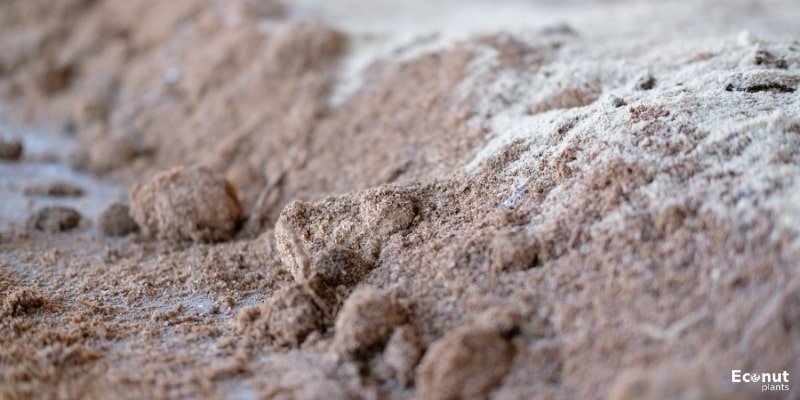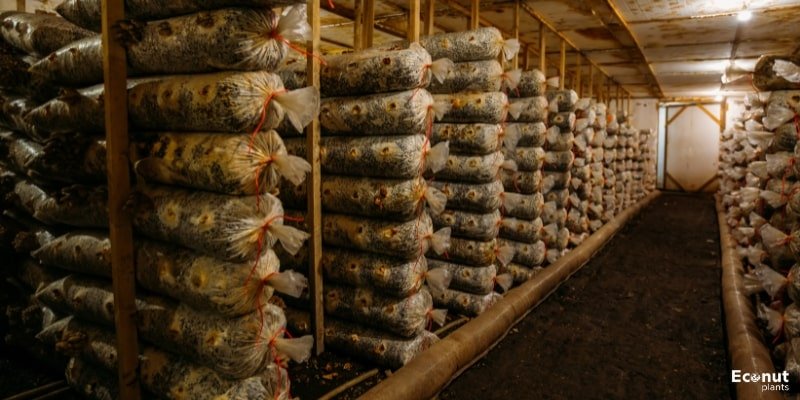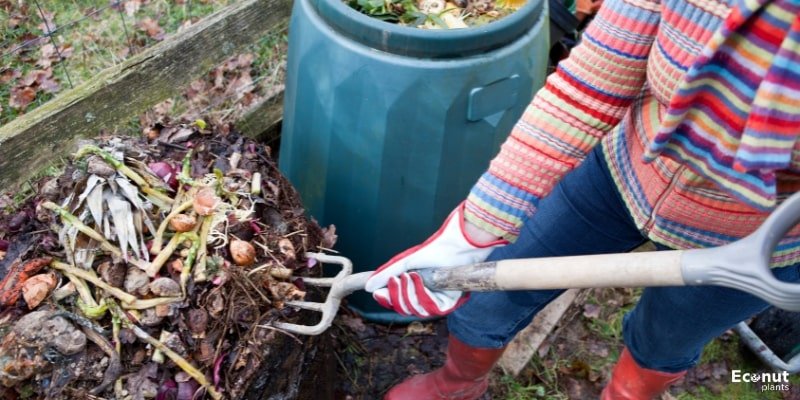Mushroom compost is not what its name implies; it is a by-product of cultivating mushrooms, where the growing medium is removed after the mushrooms are harvested. I suppose mushroom soil would be a better name for it.
For any gardening activity you take on, mushroom compost is a great complement. Not only is it a great soil builder, but it also breaks down hard clay and retains soil moisture efficiently.
But what specifically is mushroom compost composed of, and how is mushroom compost applied? Could you take care of yourself? Let’s collaborate to find the answers to these and other queries!
What Is Mushroom Compost?
The product you purchase for use in your garden simply says “mushroom compost” or “mushroom soil” on the bag. Simple assumptions would be that this is compost derived from cultivating mushrooms or that it is compost made of mushrooms.
This isn’t always the case, though. All of these phases of compost are referred to as “mushroom compost,” so let’s examine them and learn more about each kind.
Mushroom Substrate

The medium, also known as substrate that is used to cultivate mushrooms is referred to as “mushroom compost.” Combining gypsum, chicken or horse manure, and wheat straw is one of the most often used commercial mixes for mushroom substrate. These are just a few of the most popular components, but you can use more.
A company will start with big bales of wheat straw in order to generate this specific mushroom compost in industrial quantities. To create a finer particle, the straw is subsequently fed through a chipper.
By then, it would be possible to cultivate mushrooms by inoculating the compost with mushroom spores. It is usable exactly as it is. However, this substance is mostly used in large-scale agricultural applications or for the commercial cultivation of mushrooms for supermarkets.
Spent Mushroom Substrate

Once mushroom compost has been used to grow a batch of mushrooms, it is still quite helpful! Fungal inoculation actually makes the compost break down and resemble soil, so in some respects, it might even improve it.
Spent mushroom substrate from the mushroom farming industry makes up the majority of the mushroom compost that you can buy in bags at your local home centre.
You may occasionally find mushrooms sprouting in your garden as a result. It’s kind of fun to watch them appear, but I wouldn’t suggest eating them! Just be advised that you should pluck those carefully before they reach full maturity to prevent spores from spreading across your garden.
Alternative Mushroom Composts

On what other materials do mushrooms grow? a variety of items, all of which are pasteurized before being used to guarantee that no bacteria exist that could lead to mould growth in the moist atmosphere.
Because they are easily found in tiny quantities, coffee grounds are a common choice for substrate, particularly among amateur mushroom growers. In many parts of the country, large chain coffee shops give away free coffee grounds. All you need to do is pasteurize these coffee grounds to create the foundation of a medium for mushroom growth.
Mushroom compost base also contains hardwood dust, coconut coir blended with vermiculite, and a range of manures.
These materials contribute a lot of organic matter to your soil and compost down to create a high-quality substrate for mushrooms. They also make excellent additions to gardens down the road.
What Does Mushroom Compost Used For?
The compost made from mushrooms is not a good substitute for soil. It isn’t as effective for growing other plants as it is for growing mushrooms. For container application, a decent starting ratio is 25% spent mushroom compost to 75% soil; you can adjust the ratio from there. It is unquestionably a workable soil supplement.
Although mushroom compost has a limited capacity as fertilizer, it is nevertheless present. It is a 2-1-1 slow-release fertilizer. Compared to other fertilizer options, it may include more soluble salts but fewer heavy metals. The pH of mushroom compost is in the neutral zone, at about 6.6.
Last but not least, adding your mushroom compost to a vermicomposter’s worm bedding will produce rich fertilizer that is teeming with healthy microbes. It’s definitely worthwhile to do this since it can immediately enhance the qualities of your soil. If you’d like, you can also put it in your tumbler composter to break it down even further!
How to Make Mushroom Compost At Home
This article about growing oyster mushrooms at home may be of interest to you if you’re creating mushroom compost for growing mushrooms. It will assist you in getting your mushroom compost ready for inoculation.
The Composting Process

All you have to do to get started is undertake a hot compost process for a minimum of two weeks if your goal is just to create a product that is similar to mushroom compost. In order to eradicate any potential dangerous bacteria and kill weed seeds from the compost material, it is ideal to have your pile consistently at 160 degrees Fahrenheit for many days.
While the compost is heating up, it needs to be turned once or twice a day. The compost pile gains air as a result.
It’s time to age and cure that composts some more after it’s been hot-composted for a few weeks. Make a second pile and give the material a few weeks to mature. This will further break down and eventually turn the compost a darker brown.
Once the secondary composting stage is complete, your compost is ready to use if you aren’t using it to grow mushrooms! However, that is not a negative thing.
Pasteurization and Sterilization

You will still need to pasteurize this compost if you plan to use it to cultivate mushrooms. It is quite simple to make compost from straw, manure, or coffee grounds. Simply fill a large pot with water and heat it to a rolling boil. Next, add your compost material to a mesh or cloth bag.
You are getting closer to the time when you can use mushroom compost now that your material has been pasteurized.
It’s a little trickier to sterilize. Cooking your substrate in a pressure cooker for 2.5 hours at 15 PSI and over 250 degrees is the simplest way to accomplish this. Because this method will sterilize both the grow bag and the substrate, you must ensure that moisture has been added before beginning and that your substrate is already inside the grow bag.
When and How to Use Mushroom Compost
If you happen to purchase mushroom compost that is still fresh, it must cure before being added to your soil. The majority of mushroom compost that is offered in the trade has been aged or cured.
You can apply aged, cured mushroom compost in the spring or summer at any time. In order to prevent compacting the soil when tilling in additions, application is most successful when the soil is somewhat dry.
Aged mushroom compost can be applied to a variety of plants, such as the following, by either working it into the soil or spreading it as mulch around the base:
- Lawns, also as a top-dressing for newly seeded lawns
- Vegetable gardens
- Orchards
- Perennials, trees, and shrubs
- Container plants
Evenly distribute one to three inches of mushroom compost onto the surface of flower beds and vegetable gardens, then till it into the top six inches of soil. For plants in containers, combine approximately 25% of an aged mushroom compost volume with 75% potting medium.
FAQ
Does mushroom compost allow for direct planting?
Mushroom compost is a great growing medium, but you should always incorporate it into the soil before planting. It depends on whether you can plant immediately in the improved soil if you adhere to this rule.
Since the high salt content of mushroom compost might harm tender seedlings and seeds, it is best to wait until the plants are well-established before incorporating mushroom dirt into the surrounding soil.
Can mushroom compost be used in excess?
Excessive application of any soil amendment might be detrimental. Don’t apply more than three to nine cubic yards per 1,000 square feet, or a layer of one to three inches, as advised.
Which plants are fond of composting mushrooms?
The majority of garden crops, particularly those like tomatoes that can withstand higher salinities and gain from extra calcium, benefit from the addition of mushroom compost to their soil.
Only use well-aged mushroom soil in the areas surrounding your camellias, azaleas, rhododendrons, and other Heath family (Ericaceae) plants because the high salt concentration can be detrimental to them.

